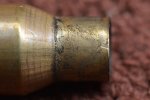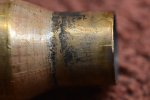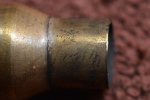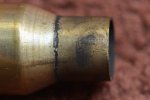I recently purchased a brand new Remington 700P, in 308. After >100 shots I began having issues with the bolt extracting properly. The bolt would remain stuck in the chamber and wouldn't slide out to eject the spent brass. I tried to see if perhaps it was just that round, but have continued to have issues with the rifle since. This issue seems to only happen with rounds that have been fired, unfired rounds, seem to extract out perfectly fine. I have tried putting fired brass back into the chamber to test, and have a hell of a time trying to get it to extract back out. For some of the tries I had to get a rubber mallet to knock the bolt back to get it to eject the brass again. Just a note, I have tried 2 different types of brass, and both seem to have the same issues. IMI match brass, and also Lake City Military Brass.
I have already sent the rifle back to Remington for repair once for this issue, and will be sending it back again since my rifle is affected by the current trigger recall. After the first "repair," it was said that my extractor was replaced, headspace was checked, and then fired for function test. Since getting it back I was able to take it to the range once. The problem seems to still persist. Not with every round, but there were some that were difficult to extract. It was an improvement over what happened when the problem first started, but for a brand new gun I really don't think that it should be having these issues. I had a buddy look it over and he said it might have something to do with my lugs, almost as if the lugs don't seem to clear the recesses on the receiver, thus being unable to retract the bolt to remove the round. I am really in the dark hear, I don't know much about bolt actions, considering this is my first one. If anyone has advice, or can clue me into what the problem may be, please let me know, it would be much appreciated. Thank you!
I have already sent the rifle back to Remington for repair once for this issue, and will be sending it back again since my rifle is affected by the current trigger recall. After the first "repair," it was said that my extractor was replaced, headspace was checked, and then fired for function test. Since getting it back I was able to take it to the range once. The problem seems to still persist. Not with every round, but there were some that were difficult to extract. It was an improvement over what happened when the problem first started, but for a brand new gun I really don't think that it should be having these issues. I had a buddy look it over and he said it might have something to do with my lugs, almost as if the lugs don't seem to clear the recesses on the receiver, thus being unable to retract the bolt to remove the round. I am really in the dark hear, I don't know much about bolt actions, considering this is my first one. If anyone has advice, or can clue me into what the problem may be, please let me know, it would be much appreciated. Thank you!









